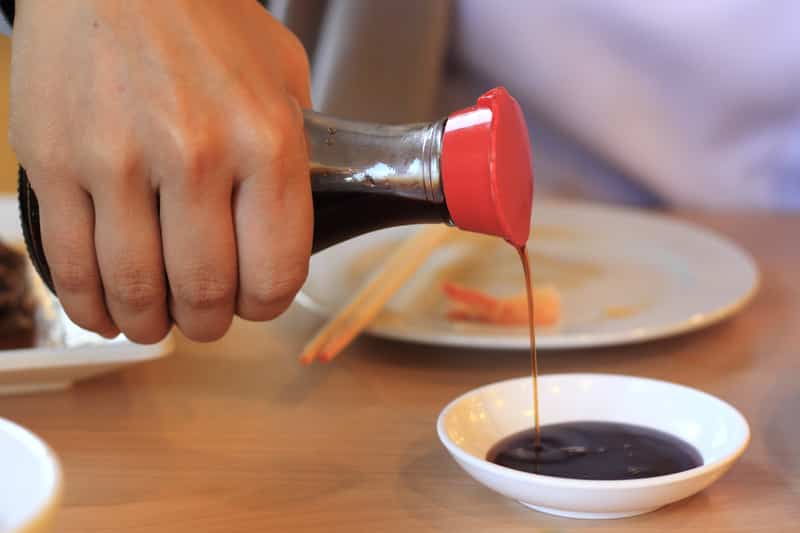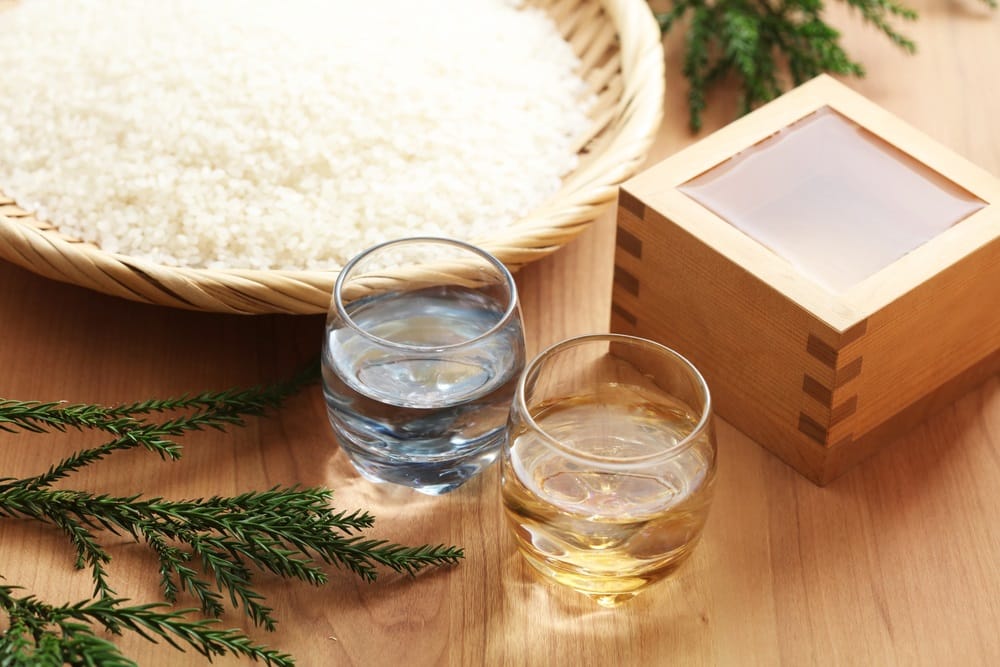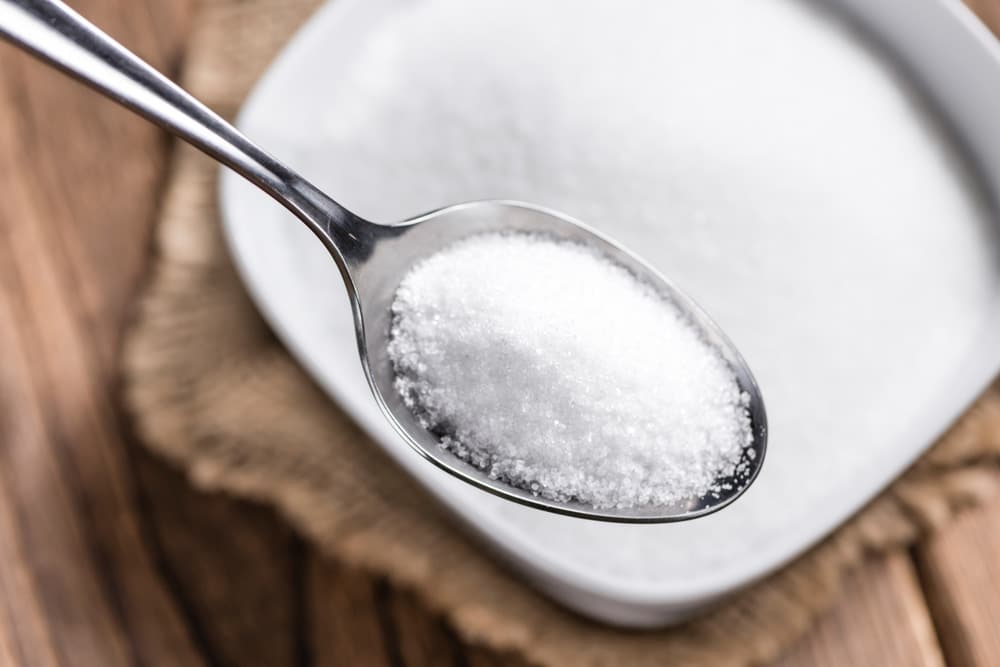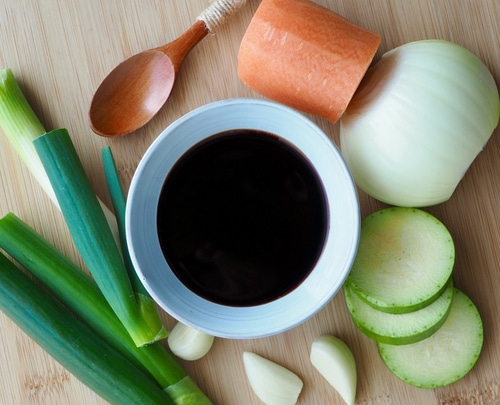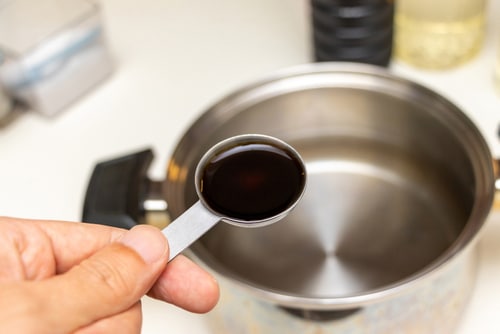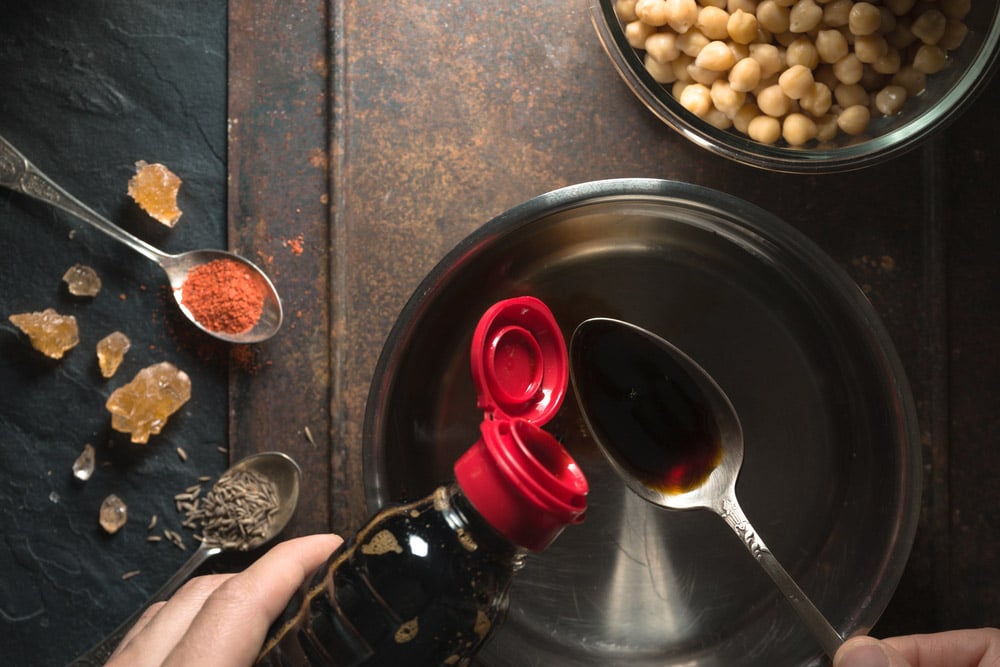
With all the condiments and sauces available for spicing up cuisines and adding flavor to cooking, soy sauce is without a doubt, one of the most widely used.
It originated from Chinese cuisine and is generally made out of fermented soybeans, roasted grain, brine and aspergillus sojae molds.
Since it has a rich dark texture, soy sauce also boasts an array of balanced spices and high sodium, giving it that unique flavor that makes it so popular.
It’s this spice and sodium combination that makes it the perfect addition to everything from noodles to fish and everything in between. It’s important to note though, that soy sauce should be used in a balanced quantity.
With its high sodium content, too much soy is not really something you should be striving toward. That said, it can happen that you accidentally add too much soy to your recipe.
Fortunately, the dish won’t be spoiled as there are a few things you can do to reduce the overwhelming taste of soy.
How to Fix Too Much Soy Sauce?
The good news is that adding too much soy sauce won’t necessarily ruin your dish. There are several expert tips and tricks that can help you save your meal. Let’s dive in and take a look at some of them!
- Rice Wine
Rice dishes are among the most common foods that you may accidentally have put too much soy sauce in whilst cooking. In this instance, you’re looking for a mild balance of rich and sweet to counter the overwhelming soy flavor. What better way to achieve this than with some rice wine?
You will need to add an adequate amount of rice wine to the cooking pot to counter any excessive soy sauce. This will also mean that you have to cook your rice a little longer to get the rice wine absorbed into the rice. For most rice-based recipes, this is the ultimate fixing solution!
- Water
If you have added soy to the early stages of your cooking, the best way to fix too much is by adding a little bit of water to the dish. That way you are simply diluting the soy and reducing its overbearing effect.
The trick here is to ensure that you don’t pour too much water into the dish. Depending on what you’re making, too much water could make the dish gooey or soggy. Start by adding a few tablespoons of water and stirring the dish.
Taste the effect of the water on the soy and continue adding small quantities until the soy is no longer too strong. Since you’ve added extra water in this instance, you might have to increase your cooking time to adequately reduce the extra fluid.
- Sugar
Another common ingredient many cooks rely on to counter too much acidity in something like soy or tomato paste is sugar. Of course, this would depend on the other ingredients already in the pot.
If the dish already has sweet elements, sugar may not be the answer. However, if your dish is primarily acidic, consider a few teaspoons of sugar. Be sure to not overdo it—you’ll have to do it one teaspoon at a time to ensure you have replaced an acidic problem with a sweet one.
Simply add a teaspoon of sugar, stir the food, and taste. If the soy sauce is still overwhelming, then add another teaspoon of sugar. Keep doing this until you have eliminated the overwhelming soy sauce taste.
- Vinegar
It might sound a little bit odd to add vinegar (which is acidic) to soy sauce (which is also acidic) but believe it or not, it actually works! Vinegar is the perfect solution for anyone who doesn’t want to add any sweet flavor to their dish and is therefore not keen on sugar.
As with the other potential remedies, start with small quantities. Start with a teaspoon, stir and taste. Keep doing this until you find the perfect mixture of soy and vinegar for your dish.
Another plus point to adding some vinegar is that it will bring out the aroma and texture of your dish. If you’re keen on the acidic remedy, but don’t have vinegar in your pantry, another go-to remedy is adding a few fruit slices such as lemons or limes.
At first, try adding two or three slices and allow the disk to cook for several minutes. Do a taste test to see if the acidity and sodium have balanced out. If not, add another slice or two of your chosen fruit.
- Add Vegetables
Another quick and easy way to diminish the excessive salt content of adding too much soy sauce is to add some vegetables to the dish. This of course depends on what you are cooking. If adding vegetables will “ruin” your dish, consider the following tip.
- Cut vegetables such as potatoes, onions, or scallions into chunks and let them cook in with the dish. Just before serving, remove them from the dish.
- Vegetables such as potatoes will easily absorb some of the salt from the soy sauce, leaving you with a dish that’s flavorful but not overwhelming.
- Additionally, grating vegetables such as carrots, potatoes, onions, and tomatoes into the dish will not only add a pop of color to your plate but will make the excess soya sauce less overbearing.
Vegetables from the allium family such as garlic and shallots can easily be combined with any dish that contains soy sauce and since they absorb the excess sodium, it’s a brilliant way to tame your soy sauce!
How Much Soy Sauce Should You Add to Your Dish?
The amount of soy sauce needed in a dish depends largely on two things. Firstly, the type of dish and what other spices it already contains. And, secondly, the person who is eating it.
We’ve all seen people who prefer a little amount and others who add extra even after you’ve already added it to the cooking process. So, is there a specific amount to add to prevent it from being sour, acidic, and generally overwhelming?
Expert chefs and home cooks will always recommend that you add soy sauce to your recipe in small, gradual amounts. The general rule of thumb is about 3-4 tablespoons per medium-sized portion.
However, to avoid overdoing it, add the sauce one tablespoon at a time and keep tasting till you find the right combination.
Why Does It Matter How Much Soy Sauce You Add?
Essentially, one cup of soy sauce contains about 14g of salt. Depending on the salt content of the other spices in the dish, this may be too much salt for some people.
This is especially the case for small children or people who suffer from high blood pressure or cholesterol. Always enquire about the preferences of your guests before assuming everyone loves a lot of soy sauce!
Conclusion
There’s no denying it. Soy sauce, if added correctly, can enhance the flavor of just about any dish. Follow our advice by adding your soy sauce in small quantities and keep doing small taste tests until you find the exact combination that makes your dish both flavorful and enjoyable!
